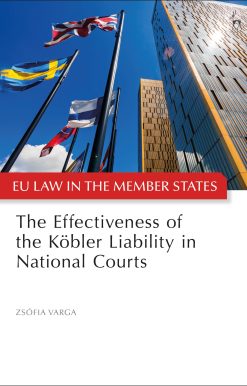Truth: How the Many Sides to Every Story Shape Our Reality
26.00 JOD
Please allow 2 – 5 weeks for delivery of this item
Add to Gift RegistryDescription
From one of the world’s leading experts in business storytelling, and for readers of Daniel Levitin, Nate Silver, and Charles Duhigg, Truth: A User’s Guide is about the different types of competing truths we face every day in life: how to identify them, why they work, when they are used and misused, and what we can do to guard against them or–when appropriate–to make constructive use of them.We tend to see the world like Orwell’s Winston Smith: “There was truth and there was untruth.” Yet the world is far more complicated than that. In a time of “post-truth”, when “fake news” is itself the subject of our headlines, it is not “untruths” that we need to worry about. Hector Macdonald reveals and examines one of our greatest collective blind spots: we are all routinely misled by the truth. This is because for any fact, scenario, story, and situation, there are what Hector terms “Competing Truths.” Why do Competing Truths matter? They matter because we vote, shop, work, co-operate, and fight based on what we believe to be true, and what we believe depends in large part on what we read or hear from others. Many of the most sophisticated and influential forms of political, business, and media communication manipulate technically true statements to pull the wool over the public’s eyes. Truth is not an absolute–it has its own spectrum. Truth: A User’s Guide shows us how to cut through the nebulous issue of truth using a scaffold of timely examples. These examples range from the disingenuous use of statistics in Donald Trump’s speeches to the 2013 fallacy that Western quinoa demand was disadvantaging native Andean farmers, to the structure, ethics, and success of Uber. Macdonald is as comfortable and insightful parsing the influence of Facebook as he is examining Colgate’s misleading campaign as the toothpaste recommended by dentists. Truth: A User’s Guide explores how we can guard against the noise of competing truths, in business, in our personal relationships, and within ourselves, but also how we can use them to our advantage. Written with authority and humour, this is an accessible and illuminating narrative that will find a wide audience among readers in search of understanding why the meaning of “truth” seems to have gone completely haywire.
Additional information
| Weight | 0.55 kg |
|---|---|
| Dimensions | 3.08 × 16.08 × 23.6 cm |
| Format | |
| language1 | |
| Pages | 352 |
| Publisher | |
| Year Published | 2018-3-6 |
| Imprint | |
| Publication City/Country | Canada |
| ISBN 10 | 0771061439 |
| About The Author | Hector Macdonald is an expert in business storytelling. As a strategic communications consultant, he has advised the leaders of some of the world's top corporations in industries as diverse as financial services, telecoms, technology, and healthcare. He is also the bestselling author of four novels. |
| Excerpt From Book | The Andean dilemmaFor vegetarians and coeliacs, the discovery of quinoa was a kind of miracle. Here was a gluten-free seed, rich in magnesium and iron, that contained more protein than any grain, including all the essential amino acids our bodies cannot produce for themselves. NASA declared quinoa to be one of the most perfectly balanced nutrients on Earth and considered it ideal for astronauts. ‘Quinoa tastes great, has a satisfying, “bouncy” texture and is one of the healthiest foodstuffs going,’ raved Yotam Ottolenghi in 2007. Grown in the Andes, quinoa had a story that charmed Western consumers: the Incas prized the seed so highly they deemed it sacred and named it ‘the mother of all grains’; their emperor would sow the first seeds of the season with tools made of gold.The so-called ‘superfood’ was even celebrated by the United Nations, which declared 2013 the ‘International Year of Quinoa’. But quinoa fans were in for a disturbing revelation. Between 2006 and 2013, quinoa prices in Bolivia and Peru tripled. At first, the price rise was celebrated for raising the living standards of poor Andean farmers. Then came rumours that local people could no longer afford to eat their traditional food because of the insatiable demand from North America and Europe. The Independent warned in 2011 that quinoa consumption in Bolivia had 'slumped by 34 per cent over five years, with local families no longer able to afford a staple that has become a luxury'. The New York Times cited studies showing that malnutrition in children was on the rise in quinoa-growing areas. The Guardian raised the stakes in 2013 with a provocaative headline: 'Can vegans stomach the unpalatable truth about quinoa?' It was now cheaper for poor Peruvians and Bolivians to eat 'imported junk food', the newspaper reported. 'Quinoa: good for you – bad for Bolivians,' ran a 2013 Independent headline. The story echoed around the world, causing healthy eaters a crisis of conscience. 'The more you love quinoa, the more you hurt Peruvians and Bolivians,' claimed a headline in Canada's Globe and Mail. On social media, vegan blogs and heallthy-eating forums, people asked whether it was still OK to eat the Andean miracle seed. 'I inted to stop eating quinoa,' declared one woman: It's a matter of principle . . . the people for which quinoa has been a dietary staple for untold generations can no longer afford to eat it because people like me have created such a demand for its export and driven the price up . . . We will survive without it. I will survive without it.The idea that high quinoa prices, inflated by global demand, had disadvantaged local people in Bolivia and Peru was credible and widely accepted. But it didn’t seem right to economists Marc Bellemare, Seth Gitter and Johanna Fajardo-Gonzalez. After all, a lot of foreign money was now pouring into Bolivia and Peru thanks to the quinoa trade, much of it ending up in some of the poorest parts of South America. Not many other crops grow well 14,000 feet above sea level, so surely the quinoa boom was a blessing for the region? The economists tracked down Peruvian survey data on household expenditure and split the households into those that grow and eat quinoa, those that eat it but don't grow it, and those that never touch the stuff. They found that between 2004 and 2013 the living standards of all three groups had risen, although the quinoa farmers had enjoyed the fastest growth in household expenditure. Farmers were getting richer, and they were spending their new earnings to the benefit of those around them. The households that ate quinoa but didn't grow it were, on average, already twice as well off as the farmers, suggesting they could afford to pay a bit more. That's not surprising: only around 0.5 per cent of Peruvian household spending goes on quinoa. It never was a critical part of their domestic budget. 'It's really a happy story,' said Seth Gitter. 'The poorest people got the gains.' But what about that 34 per cent drop in consumption? It turns out quinoa consumption in both countries dropped slowly and steadily over a long period than the price hike, suggesting the two trends are not significantly connected. A much more likely explanation is that Peruvians and Bolivians just wanted to eat something else for a change. Tanya Kerssen of think tank Food First said of Andean quinoa farmers, 'They get sick of eating quinoa, frankly, so they buy other foods.' A Bolivian agronomist noted, 'Ten years ago they had only an Andean diet in front of them. They had no choice. But now they do and they want rice, noodles, candies, Coke, they want everything!' I went to see quinoa growing in the Colca Valley, an area of Peru that has been farmed since pre-Inca times. It is a beautiful cereal-like crop, with large seed heads of a deep red or rich golden colour. In this part of the Andes, quinoa is grown in terraced fields alongside unusual local varieties of corn and potatoes. 'The foreign demand is one hundred per cent a good thing,' declared my Peruvian guide, Jessica. 'The farmers are very happy, and anyone who wants quinoa can still afford it.' There's been a further benefit, she explained: previously, metropolitan Peruvians had tended to regard people from her region as 'peasants' for eating quinoa; but now that Americans and Europeans crave it, quinoa is considered fashionable. 'In Lima, finally, they have respect for the people of the Altiplano and our heritage.' In a remote and inhospitable area of southwest Bolivia dominated by salt flats and dormant volcanos, I was shown much-needed local development and tourism projects that had been funded by quinoa money. Subsistence farmers, who for generations had struggled to feed their families, could now start to invest in a more ambitious future. According to José Luis Landívar Bowles, president of the Bolivian Institute of Foreign Trade, quinoa could ‘help lift a lot of people out of extreme poverty’. The only concern I heard Bolivians voice about the crop in April 2017 was that expanding supply was bringing prices down. The area of land dedicated to quinoa cultivation in Bolivia has more than tripled, from around 50,000 hectares in 2007 to 180,000 hectares in 2016. 'For me, that is a sad epilogue, as it is unlikely prices will go back up,' Marc Bellemare told me later. 'The market functioned pretty much in Econ 101 textbook fashion, with the (temporary) extra-normal profits competed away by new producers.' As the sun set over the picturesque Colca Valley, I asked Jessica if consumers in Europe and North America should feel guilty about eating food that might otherwise have gone to Peruvians and Bolivians. I could guess the answer, but I wanted to hear it from a local. Jessica burst out laughing and extended an arm, as if to encompass the whole bounteous valley. 'Believe me,' she smiled, 'we have a lot of quinoa.' *This odd tale of food fads, global trade and consumer angst seems, at first glance, to be a story of falsehood corrected. But in fact most of the claims made in the first half are just as true as those made in the second. Quinoa prices did triple, making it more expensive for consumers in Peru and Bolivia to buy one of their staple foods. Quinoa consumption in those countries did drop. The only thing that wasn't true was the conclusion drawn: that healthy eaters in the West were hurting poor Peruvians and Bolivians by denying them their traditional foodstuff. Yet those truths, misinterpreted as they were, might have done real damage to the people of the Altiplano. 'I've seen comments on some of these anti-quinoa articles, like, "Thanks for shining a light on the truth. I won't consume Bolivian quinoa because it's hurting these farmers,"' said Michael Wilcox, a filmmaker who made a documentary about the issue. 'Well, not consuming it is really going to hurt these farmers.' A set of partial truths and misunderstood numbers were strung together in a story without the right context, changing both the desirability of a foodstuff and the morality of eating it. As we will discover, partial truths, numbers, stories, context, desirability and morality are just some of the elements used by experienced communicators in all walks of life to shape reality by presenting a particular view of the world. In this case, the journalists and bloggers steering consumers away from quinoa were doing it for the noblest of reasons: they were genuinely concerned for the welfare of an impoverished people suddenly exposed to the tempestuous winds of global trade. We will encounter plenty of cases where politicians, marketers, activists and even civil servants have shaped reality with far less benevolent intentions. |
Only logged in customers who have purchased this product may leave a review.





Reviews
There are no reviews yet.